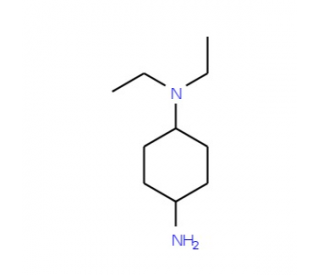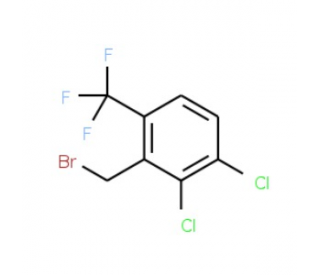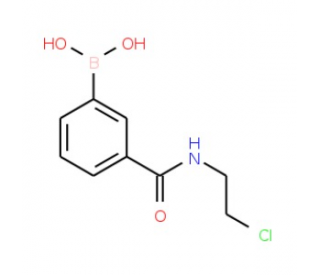詳細(xì)說明
Purity
>97%, by SDS-PAGE under reducing conditions and visualized by silver stain.
Endotoxin Level
<1.0 EU per 1 μg of the protein by the LAL method.
Activity
Measured in a cytotoxicity assay using L?929 mouse fibroblast cells in the presence of the metabolic inhibitor actinomycin D. Matthews, N. and M.L. Neale (1987) in Lymphokines and Interferons, A Practical Approach. Clemens, M.J. et al. (eds): IRL Press. 221. The ED 50 for this effect is 4-12 ng/mL.
The apoptotic effect of soluble trimeric rhTRAIL can be enhanced by oligimerization of the soluble rhTRAIL through the use of a cross-linking antibody Mouse Anti-polyHistidine Monoclonal Antibody (Catalog # ). The ED50 for this effect is 1-4 ng/mL.
Note: This is one of multiple forms available for this protein. Check R&D Systems' website, www.RnDSystems.com, for a complete listing of the variants.Source
Mouse myeloma cell line, NS0-derived Thr95-Gly281, with an N-terminal Met and 6-His tag
Accession #
N-terminal Sequence
AnalysisMet
Structure / Form
Noncovalently-linked homotrimer and disulfide-linked homodimer
Predicted Molecular Mass
21 kDa (monomer)
SDS-PAGE
24 kDa, reducing conditions
Carrier Free
What does CF mean?
CF stands for Carrier Free (CF). We typically add Bovine Serum Albumin (BSA) as a carrier protein to our recombinant proteins. Adding a carrier protein enhances protein stability, increases shelf-life, and allows the recombinant protein to be stored at a more dilute concentration. The carrier free version does not contain BSA.
What formulation is right for me?
In general, we advise purchasing the recombinant protein with BSA for use in cell or tissue culture, or as an ELISA standard. In contrast, the carrier free protein is recommended for applications, in which the presence of BSA could interfere.
375-TL |
| 375-TL/CF |
Formulation Lyophilized from a 0.2 μm filtered solution in PBS with BSA as a carrier protein. | Formulation Lyophilized from a 0.2 μm filtered solution in PBS. | |
Reconstitution Reconstitute at 20 μg/mL in sterile PBS containing at least 0.1% human or bovine serum albumin. | Reconstitution Reconstitute at 100 μg/mL in sterile PBS. | |
Shipping The product is shipped at ambient temperature. Upon receipt, store it immediately at the temperature recommended below. | Shipping The product is shipped at ambient temperature. Upon receipt, store it immediately at the temperature recommended below. | |
Stability & Storage: Use a manual defrost freezer and avoid repeated freeze-thaw cycles.
| Stability & Storage: Use a manual defrost freezer and avoid repeated freeze-thaw cycles.
|
Background: TRAIL/TNFSF10
TRAIL (TNF-related apoptosis-inducing ligand), also known as APO-2 ligand, is a type II transmembrane protein with a carboxy-terminal extracellular domain which exhibits homology to other TNF family members. In the new TNF superfamily nomenclature, TRAIL is referred to as TNFSF10. Human TRAIL cDNA encodes a 281 amino acid (aa) residue protein with an amino-terminal intracellular domain of 17 residues and a predicted internal hydrophobic domain between residues 18 and 38. The extracellular carboxy-terminal domain contains a potential N-linked glycosylation site at amino acid residue 109. Among TNF family members, TRAIL is most homologous to FAS ligand, sharing 28% amino acid sequence identity in their extracellular domains. Mouse TRAIL has also been cloned. The human TRAIL shares 65% amino acid sequence identity with mouse TRAIL and is active on mouse cells. Both membrane bound and soluble TRAIL have been shown to induce rapid apoptosis of many transformed cell lines. Like most TNF family members, the bioactive TRAIL exists as a homotrimer. TRAIL transcripts have been shown to be constitutively expressed in a variety of human tissues. A family of TRAIL receptors, including two receptors that tranduce the apoptotic signals and two TRAIL decoy receptors that function to antagonize TRAIL-induced apoptosis, have been identified (1 - 3). Osteoprotegerin has been identified as a fifth TRAIL receptor (4).
References:
Golstein, P. (1997) Current Biology 7:R750.
Wiley, S.R. et al. (1995) Immunity 3:673.
Pitti, R.M. et al. (1996) J. Biol. Chem. 271:12687.
Emery, J. et al. (1998) J. Biol. Chem. 273:14363.
Long Name:
TNF-related Apoptosis-inducing Ligand
Entrez Gene IDs:
8743 (Human); 22035 (Mouse)
Alternate Names:
Apo-2 ligand; APO2L; Apo-2Ltumor necrosis factor (ligand) family, member 10; APO2Ltumor necrosis factor apoptosis-inducing ligand splice variant delta; CD253 antigen; CD253; Protein TRAIL; TL2; TNF-related apoptosis-inducing ligand; TNFSF10; TRAIL; TRAILTNF-related apoptosis inducing ligand TRAIL; tumor necrosis factor (ligand) superfamily, member 10; tumor necrosis factor ligand superfamily member 10










 粵公網(wǎng)安備44196802000105號
粵公網(wǎng)安備44196802000105號